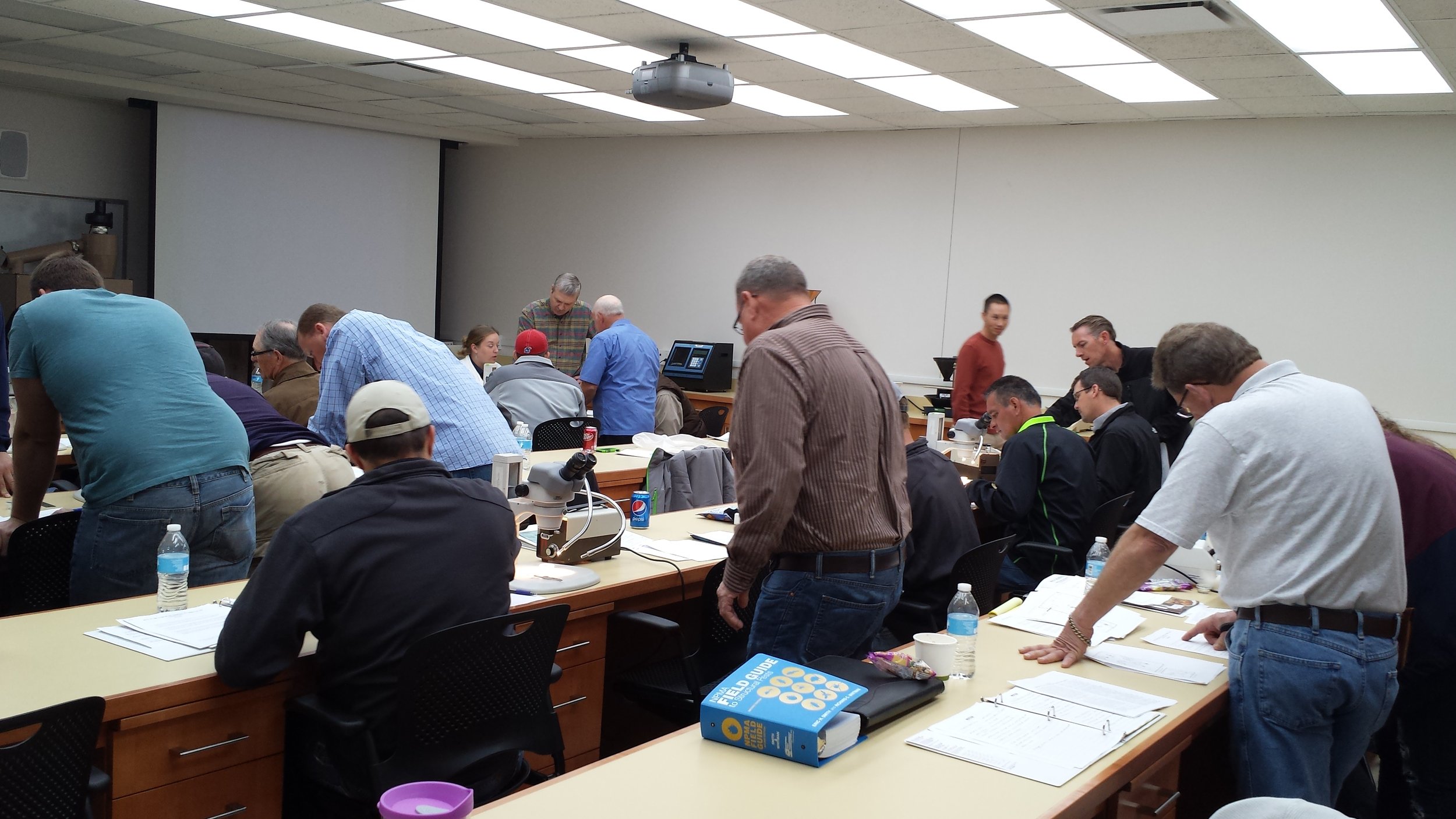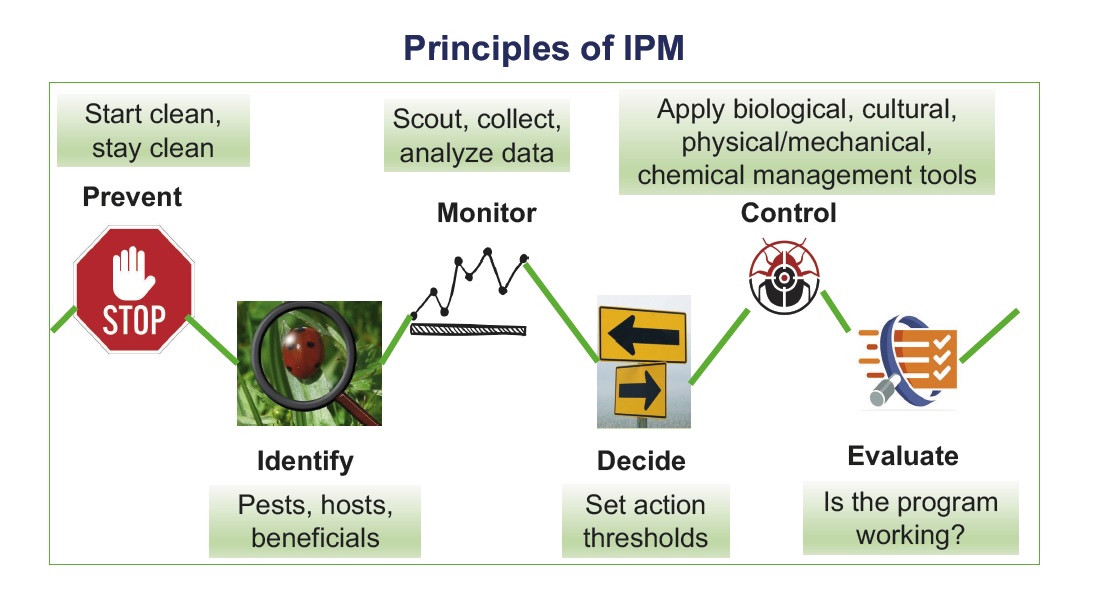Getting The Pestwise To Work
Getting The Pestwise To Work
Blog Article
5 Easy Facts About Pestwise Explained
Table of ContentsPestwise Things To Know Before You Get ThisAll about PestwiseEverything about PestwisePestwise Things To Know Before You Get ThisPestwise for BeginnersPestwise Fundamentals ExplainedThe Ultimate Guide To Pestwise

Q. Specify "integrated insect management" (IPM) and checklist a number of possible control techniques that may be made use of in an IPM technique. A. Integrated pest monitoring is the combining of ideal insect control tactics right into a single strategy to reduce bugs and their damage to an appropriate degree. Bug control tactics might include: host resistance, biological control, social control, mechanical control, sanitation, and chemical (chemical) control.
The Buzz on Pestwise
What can you do to keep the insects you are attempting to regulate from becoming resistant to the pesticides you utilize? A. Parasite resistance can be reduced by utilizing incorporated parasite management and rotating the types of chemicals made use of.
Parasites are an essential threat to the farming company, and incorporated bug monitoring aids growers address and reduce these dangers. Integrated insect administration makes use of numerous approaches in complex, hence being an extra reliable solution to the concern. Termite Control. Particularly, getting rid of hostile chemical techniques enables lessening damage to people and the environment by utilizing natural and safer alternatives rather
Pestwise - An Overview
The objective of integrated pest monitoring is to decrease this damage and control appropriate problem levels as opposed to get rid of all unwanted populations. This is why it is necessary to comprehend what steps are warranted in each situation and use hostile ones only when various other integrated monitoring methods don't function. Integrated management minimizes the unfavorable consequences of a non-IPM technique, and the primary benefits of IPM Perks of IPM.
An appropriate understanding of the problem scope determines if the trouble should be attended to. are the next elements of an IPM program because it is necessary to realize if the microorganisms make possible risks and select the integrated monitoring options or the certain pesticide usage. intend to lower invasions by using different agronomic techniques.
The Buzz on Pestwise
if avoidance was ineffective. Integrated administration choices in an IPM program beginning with more secure to more aggressive ones. Target or program chemical splashing might adhere to hand-operated elimination or capturing that hasn't aided. The prior incorporated monitoring facets aid recognize how to prepare and execute an IPM program detailed: Screen your crops regularly.

Amongst others, IPM social approaches consist of the adhering to area management techniques: soil treatment; choice of appropriate plants; crop rotation; interplanting or strip cropping; option of planting dates; weed control; use trap plants. Positive dirt problems quicken plant development, and vigorous crops are much more resistant to invasions. Mosquito Control. In incorporated parasite monitoring, soil testing assists understand if the field is ideal for the manufacturing of this or that plant, and after that apply the lacking nutrients to ensure plant healthy and balanced development
Not known Details About Pestwise
No-till methods help stop soil disintegration, contributing to lasting farming. Nevertheless, when tilling is necessary, it is suggested to conduct it in the be up to expose them to all-natural enemies and extreme weather. Healthy and balanced plants and seeds determine successful plant development, so it is necessary to choose pest-free planting product with strong roots.
, which is also used in the integrated pest management system. Conversely, infestations enhance when plants of the same crop type or family expand with each other.
In a similar way, potato beetles can harm growing potatoes, along with tomatoes. Growing catch plants in patches is one more option for IPM intercropping. This integrated pest monitoring approach recommends drawing in insects to specific plants and then regulating them with chemical or mechanical strategies. In specific, you can grow soybeans as trap plants for Japanese beetles.
The Pestwise Diaries
Barriers are case in points see it here of physical IPM approaches. Let's take a more detailed take a look at them. Getting rid of or choosing parasites out manually is a time and labor-consuming alternative that is widely used in integrated management and chemical-free farming. Fully grown insects or their eggs and larvae are accumulated by hand and destroyed.

Department of Plant Sciences. This integrated management technique suggests an usual way of destroying pests by predators, parasitoids, pathogens, and other biological control agents (aka antagonistic organisms). The role of biological control in IPM is to.
Our Pestwise Diaries
With time, their populace ended up being an actual annoyance to farmers together with native kangaroos or dingoes. The cane toad is another instance highlighting integrated biological control failing hereof when it declined to search the target species and came to be a parasite itself. Parasitoids establish on or within their hosts to ultimately kill them after growing.
Report this page